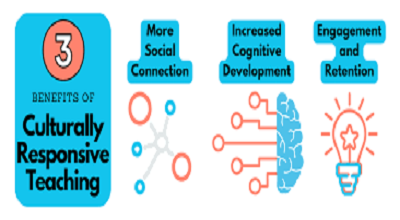Cultural Responsive Teaching
In today’s diverse classrooms, Cultural Responsive Teaching (CRT) has become an essential approach to fostering inclusive and equitable learning environments. This teaching method acknowledges students’ cultural backgrounds, integrates their lived experiences into lessons, and promotes academic success for all learners.
At TeacherEducator.com, we believe in empowering educators with the latest strategies in CRT. In this comprehensive guide, we’ll explore:
- What is Culturally Responsive Teaching?
- Why is CRT Important?
- Key Principles of Culturally Responsive Teaching
- Practical Examples of CRT in the Classroom
- Challenges and Solutions in Implementing CRT
- Latest Trends in Culturally Responsive Teaching (2024 Updates)
Let’s dive in!
What is Cultural Responsive Teaching?
Culturally Responsive Teaching (CRT) is an educational framework that recognizes and values students’ cultural identities while fostering an inclusive learning environment. Developed by Dr. Gloria Ladson-Billings and further expanded by Geneva Gay and Zaretta Hammond, CRT emphasizes:
- Student-Centered Learning – Lessons are tailored to students’ cultural backgrounds.
- High Expectations for All – Every student is held to rigorous academic standards.
- Cultural Competence – Teachers continuously educate themselves about students’ cultures.
- Critical Consciousness – Encourages students to question societal norms and biases.
Why is CRT Important?
- Improves Student Engagement – Students feel seen and valued.
- Reduces Achievement Gaps – Addresses systemic inequities in education.
- Builds Stronger Teacher-Student Relationships – Trust and respect are enhanced.
- Prepares Students for a Diverse World – Encourages empathy and global awareness.
Key Principles of Cultural Responsive Teaching
1. Positive Perspectives on Parents & Families
- Engage families in the learning process.
- Avoid stereotypes and respect cultural differences in parenting styles.
2. Communication of High Expectations
- Believe in every student’s potential.
- Provide scaffolds to help students meet high standards.
3. Learning Within the Context of Culture
- Use culturally relevant examples in math, science, and literature.
- Incorporate students’ native languages when possible.
4. Student-Centered Instruction
- Encourage collaborative learning.
- Allow students to share personal experiences in discussions.
5. Culturally Mediated Instruction
- Use teaching methods that align with students’ cultural communication styles.
6. Reshaping the Curriculum
- Include diverse authors, historical figures, and perspectives.
- Challenge Eurocentric narratives in history and literature.
7. Teacher as Facilitator
- Move away from a lecture-based approach.
- Guide students in critical thinking and self-directed learning.
Practical Examples of Cultural Responsive Teaching
1: Incorporating Multicultural Literature
- Elementary Level: Read books like Last Stop on Market Street (Matt de la Peña) to discuss urban life and community.
- High School Level: Teach The House on Mango Street (Sandra Cisneros) to explore Latino immigrant experiences.
2: Culturally Relevant Math Problems
- Instead of generic word problems, use real-life scenarios from students’ communities (e.g., calculating distances between local landmarks).
3: Celebrating Cultural Heritage Months
- Host events for Black History Month, Hispanic Heritage Month, and Indigenous Peoples’ Day.
- Invite community members to share their experiences.
4: Flexible Participation Styles
- Some cultures value group discussion over individual responses. Allow think-pair-share activities.
5: Using Students’ Native Languages
- Allow bilingual students to explain concepts in their home language.
- Provide multilingual resources.
Challenges in Implementing CRT & Solutions
| Challenge | Solution |
|---|---|
| Lack of teacher training | Professional development workshops on CRT |
| Resistance from staff | Share success stories and data on CRT’s impact |
| Limited resources | Use free online multicultural materials |
| Standardized testing pressures | Integrate CRT within existing curriculum |
Latest Trends in Cultural Responsive Teaching
- AI & Personalized Learning – Adaptive software that respects cultural learning styles.
- Trauma-Informed CRT – Addressing students’ emotional and cultural trauma.
- Global Collaboration Projects – Connecting classrooms across cultures via virtual exchanges.
- Anti-Bias Education – Explicitly teaching students to recognize and combat stereotypes.
Conclusion
Cultural Responsive Teaching is not just a trend—it’s a necessity for 21st-century education. By embracing students’ identities, educators can create more engaging, equitable, and effective learning environments.
